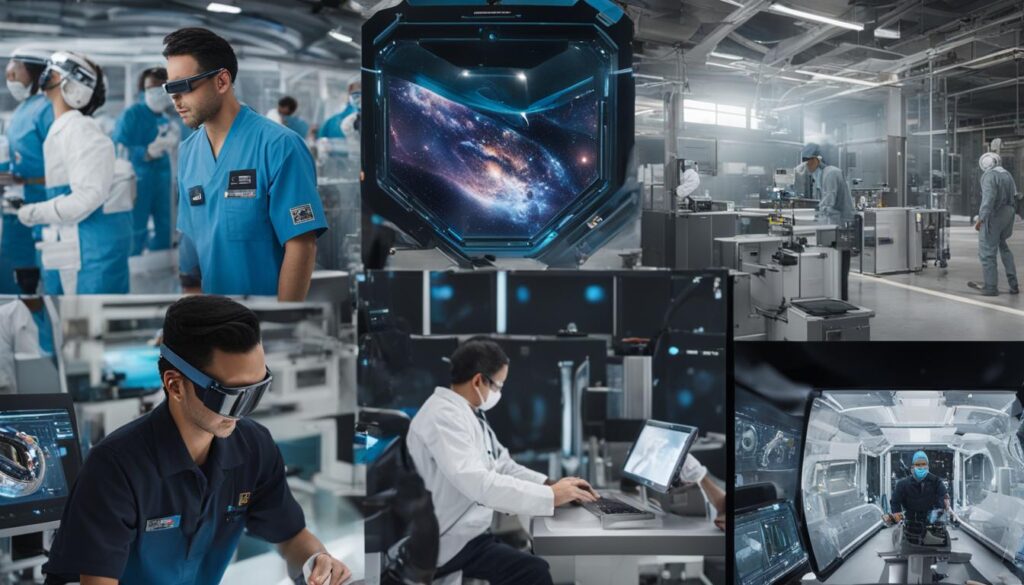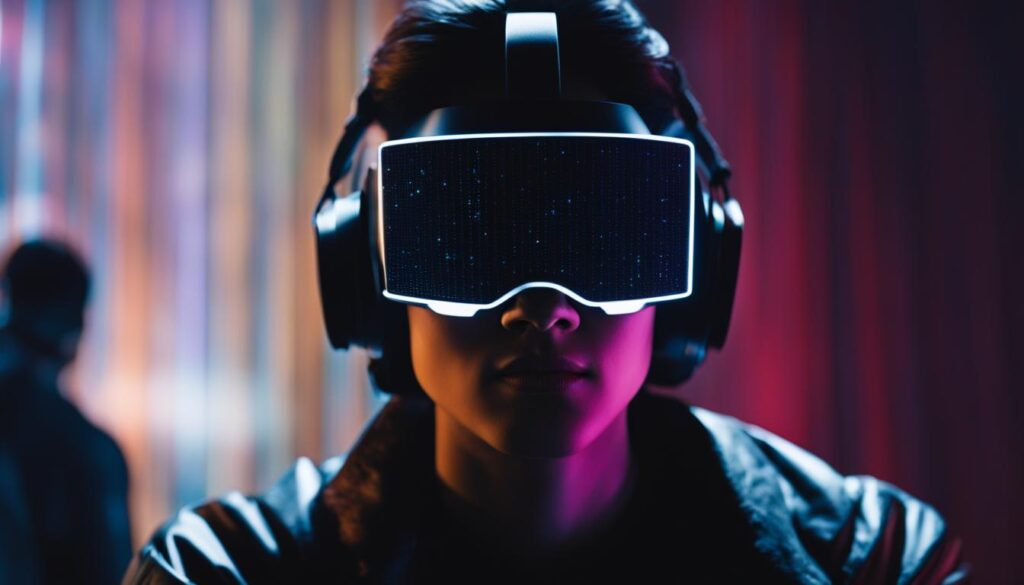Augmented reality (AR) and artificial intelligence (AI) are two separate technologies that are often confused with each other. While they can work together to enhance user experiences, they serve different purposes. AR overlays digital content onto the real world, creating an immersive and interactive environment. AI, on the other hand, focuses on developing machines that can perform tasks that traditionally require human intelligence.
While AI can enhance AR experiences by analyzing data, making predictions, and personalizing content, it is not a fundamental part of AR.
Contents
- 1 Understanding Augmented Reality
- 2 Artificial Intelligence Fundamentals
- 3 Privacy Concerns with AR and AI and How is the Industry Addressing Them?
- 4 Conclusion
- 5 FAQ
- 5.1 Is augmented reality part of artificial intelligence?
- 5.2 What is augmented reality (AR)?
- 5.3 What is artificial intelligence (AI)?
- 5.4 How do augmented reality and artificial intelligence work together?
- 5.5 What are some applications of AI in augmented reality?
- 5.6 What are the top 10 use cases of AI in AR?
- 5.7 Are there any privacy concerns with AR and AI?
- 5.8 What is the future of AR and AI integration?
- 6 Source Links
Key Takeaways:
- AR and AI are distinct technologies with different purposes.
- AR overlays digital content onto the real world for an immersive experience.
- AI focuses on developing machines that can perform tasks requiring human intelligence.
- AI can enhance AR experiences through data analysis and personalization.
- AI is not a fundamental part of AR technology.
Understanding Augmented Reality
Augmented reality (AR) is a transformative technology that enhances our perception of reality by overlaying computer-generated images, videos, or information onto the real world. By seamlessly integrating digital elements into our environment, AR creates immersive and interactive experiences that bridge the gap between the physical and virtual realms.
AR can be experienced through various devices such as smartphones, tablets, smart glasses, and headsets. It has found applications in a wide range of industries including gaming, education, retail, and navigation, among others. Whether you’re navigating through virtual landscapes in a game, exploring educational simulations, virtually trying on clothes, or receiving real-time directions, AR has the potential to revolutionize the way we interact with the world around us.
To make AR possible, the technology relies on a combination of cameras, sensors, and algorithms. These components work together to track the user’s position and orientation in real time, allowing virtual objects to interact with the physical world accurately and seamlessly. AR algorithms analyze the sensory data captured by cameras and sensors to enable object recognition, spatial mapping, and 3D pose estimation, making the virtual content appear as if it is part of the real world.
AR enables us to visualize data and information in ways that were previously unimaginable. It breaks down barriers, enhancing our understanding and engagement with the world. Whether it’s visualizing complex data sets, bringing historical events to life, or providing real-time contextual information, AR offers a new dimension to our perception and knowledge.
As AR technology continues to advance, we can expect even more refined and sophisticated applications that push the boundaries of creativity and functionality. From revolutionizing industries to transforming the way we learn and communicate, augmented reality is undoubtedly shaping the future.
Artificial Intelligence Fundamentals
Artificial intelligence (AI) is a fascinating field of computer science that focuses on developing machines capable of performing tasks that typically require human intelligence. Through the analysis of data, AI systems can make predictions, learn from experience, and adapt to new information, enabling them to solve complex problems with efficiency and accuracy.
One subfield of AI that is particularly relevant is machine learning. Machine learning involves training algorithms to recognize patterns in data and make decisions based on those patterns. By leveraging large datasets and powerful computational capabilities, machine learning algorithms can derive meaningful insights and automate decision-making processes.
AI has widespread applications across various industries and sectors. In healthcare, AI is revolutionizing patient care by enabling diagnostic accuracy, personalized treatment plans, and even assisting in surgical procedures. In finance, AI algorithms can analyze vast amounts of financial data in real-time to inform investment decisions and detect fraudulent activities. Customer service is also being transformed by AI-powered chatbots and virtual assistants, providing round-the-clock support and enhancing customer experiences.
It’s important to note that while AI can enhance augmented reality (AR) experiences by analyzing data and making intelligent decisions, it is not an intrinsic part of AR technology itself. Instead, AI serves as a powerful tool that can augment AR applications by providing real-time insights, personalized content, and intelligent predictions based on the data collected.
“Artificial intelligence is the driving force behind many technological advancements. By harnessing the power of AI, we can unlock new possibilities and push the boundaries of what machines can achieve.” – Elon Musk
Applications of AI:
Here are just a few examples of how AI is transforming various industries:
- Healthcare: AI is used for medical imaging analysis, disease diagnosis, patient monitoring, and drug discovery.
- Finance: AI algorithms assist in fraud detection, credit scoring, risk assessment, and algorithmic trading.
- Manufacturing: AI optimizes production processes, predictive maintenance, quality control, and supply chain management.
- Customer Service: AI-powered chatbots and virtual assistants provide personalized support and automate customer interactions.
As AI continues to advance, we can expect to see further integration with AR technology, leading to even more innovative and immersive experiences. The combination of AI and AR has the potential to revolutionize industries such as education, gaming, retail, and more.

These top 10 use cases highlight the immense potential of combining AI and AR to create innovative and transformative experiences across industries. By harnessing the power of AI, augmented reality can deliver personalized, immersive, and intelligent interactions, revolutionizing the way we live, work, and play.
Privacy Concerns with AR and AI and How is the Industry Addressing Them?
The integration of augmented reality (AR) and artificial intelligence (AI) in various applications raises privacy concerns among users. These technologies gather and exchange information about users’ surroundings and behaviors, which can lead to concerns about personal data collection and misuse without consent.
To address these privacy concerns, the industry has taken steps to implement privacy policies, user consent mechanisms, and data protection measures. Transparency, security, and user control are the key focus areas in ensuring privacy is protected in AR and AI applications.
Companies are increasingly making efforts to be transparent about the data they collect and how it is used. They are providing users with options to control their privacy settings and ensuring that data is handled securely. By giving users more control over their personal information, companies aim to build trust and mitigate privacy concerns associated with AR and AI technologies.
“We understand the importance of user privacy and take it very seriously. Our privacy policies are designed to be transparent and provide users with the necessary controls to safeguard their personal data. We are committed to protecting user privacy in all our AR and AI applications.”
The industry’s approach to privacy concerns with AR and AI involves:
- Implementing Privacy Policies: Companies are adopting clear and concise privacy policies that outline how personal data is collected, used, and shared in AR and AI applications.
- User Consent Mechanisms: Users are given the opportunity to provide informed consent regarding the collection and use of their personal data. Clear opt-in and opt-out options are provided to ensure user control over data sharing.
- Data Protection Measures: Companies are prioritizing the implementation of robust security measures to safeguard user data from unauthorized access, loss, or misuse.

The table below highlights the specific privacy concerns with AR and AI and the corresponding industry practices that address them:
| Privacy Concerns | Industry Practices |
|---|---|
| Unauthorized data collection | Implementing strict privacy policies and obtaining user consent before collecting personal data. |
| Lack of transparency | Providing clear and easily understandable privacy policies, informing users about data collection and usage. |
| Data security | Implementing robust security measures to protect user data from breaches or unauthorized access. |
| Third-party sharing | Ensuring transparent disclosure of third-party data sharing and obtaining user consent for such sharing. |
| User control | Offering options to users to control their privacy settings, including the ability to opt-in or opt-out of data collection. |
The industry’s commitment to addressing privacy concerns is driven by the goal of establishing trust with users and ensuring the responsible and ethical use of AR and AI technologies. By prioritizing privacy protection, companies strive to build sustainable and user-centric AR and AI experiences.
Conclusion
In conclusion, the integration of augmented reality (AR) and artificial intelligence (AI) has the potential to revolutionize user experiences across various industries. While AR enhances our perception of reality by overlaying digital content onto the real world, AI analyzes data, makes predictions, and adapts in real time. This synergy between AR and AI allows for improved object recognition, personalized content, and enhanced user interactions.
The future of AR and AI integration looks promising, as advancements in both technologies continue to drive innovation. We can expect to see further improvements in AR applications in healthcare, education, manufacturing, retail, and more. AI-powered AR can assist surgeons during surgeries, provide interactive simulations for students, enhance workplace safety in manufacturing, and offer personalized shopping experiences in retail.
As the integration of AR and AI progresses, it is important for companies to address privacy concerns and ensure transparency, security, and user control. By implementing privacy policies, user consent mechanisms, and data protection measures, the industry can ensure that users’ personal data is handled responsibly. This will build trust and confidence among users, fostering the widespread adoption of AR and AI technologies.
In conclusion, the future of AR and AI integration holds great potential for transforming various industries and improving user experiences. As these technologies continue to advance, we can look forward to more immersive, interactive, and personalized AR applications that enhance our daily lives.
FAQ
Is augmented reality part of artificial intelligence?
No, augmented reality (AR) and artificial intelligence (AI) are two separate technologies. While they can work together to enhance user experiences, they serve different purposes.
What is augmented reality (AR)?
Augmented reality is a technology that overlays computer-generated images, videos, or information onto the real world, enhancing our perception of reality by adding digital elements to our environment.
What is artificial intelligence (AI)?
Artificial intelligence is the field of computer science that focuses on developing machines that can perform tasks that require human intelligence, analyzing data, making predictions, learning from experience, and adapting to new information.
How do augmented reality and artificial intelligence work together?
AI algorithms can analyze data from AR sensors and cameras, making predictions and adapting in real time. This allows AR applications to provide personalized content, enhance object recognition and tracking, and improve user interactions.
What are some applications of AI in augmented reality?
AI in AR has applications in healthcare, education, manufacturing, retail, and more. It can assist surgeons during surgeries, provide real-time guidance to medical students, personalize AR learning experiences, improve productivity and workplace safety in manufacturing, offer virtual shopping assistants, and enhance gaming experiences.
What are the top 10 use cases of AI in AR?
Some top use cases include AR navigation, virtual shopping assistants, facial recognition in AR, medical imaging with AI, and AI-powered gaming.
Are there any privacy concerns with AR and AI?
Yes, the integration of AR and AI raises privacy concerns as these technologies gather and exchange information about users’ surroundings and behaviors. The industry is addressing these concerns by implementing privacy policies, user consent mechanisms, and data protection measures.
What is the future of AR and AI integration?
As these technologies continue to advance, we can expect to see further innovations and advancements in the integration of AR and AI, leading to more immersive and interactive experiences that transform various industries and improve user experiences.




